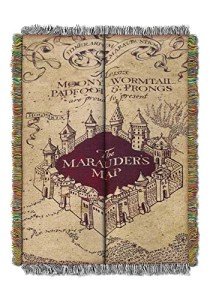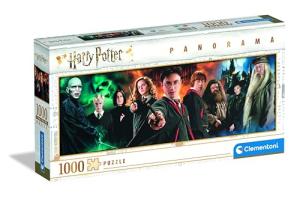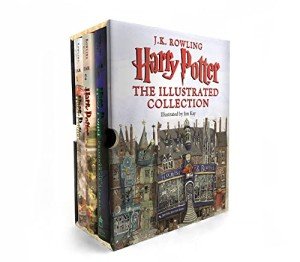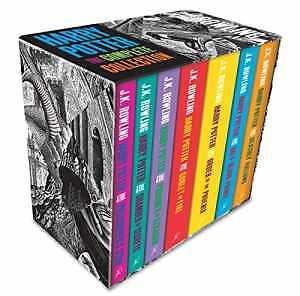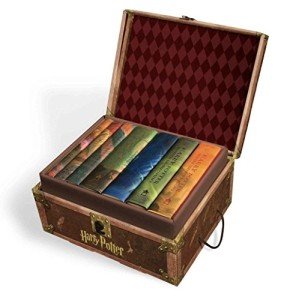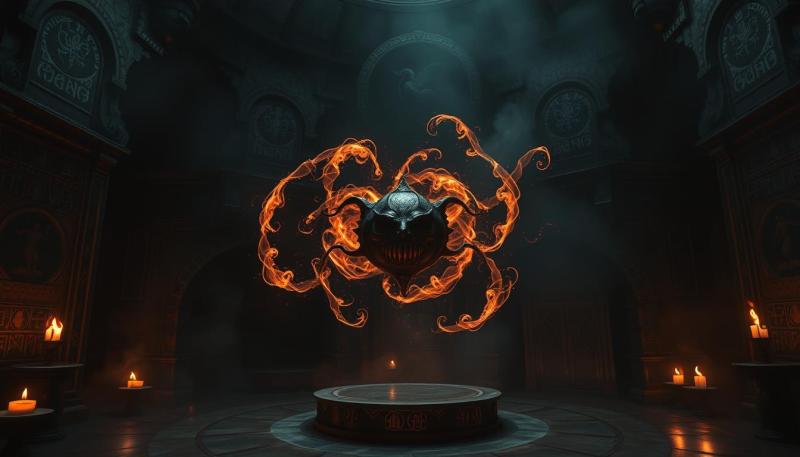Ever wondered why certain tales stick with you long after they’re told? Stories aren’t just words—they’re powerful tools that shape how we think, feel, and connect. From campfire legends to TEDx talks, this craft blends creativity with strategy in ways that feel almost… well, magical.
Think about it: a simple object—like a worn-out family photo—can become priceless when wrapped in meaning. That’s the hidden alchemy of narratives. David JP Phillips once described how stories trigger chemical reactions in our brains, linking generations through shared emotions. Ancient cave paintings, bedtime tales, viral TikToks—they all tap into something timeless.
But here’s the kicker: there’s real science behind why we lean in when someone says, “Let me tell you a story.” It’s not luck. It’s calculated yet heartfelt, like a recipe passed down through ages. Ready to uncover how this mix of art and logic works? Let’s explore together.
Key Takeaways
- Stories blend creativity and strategy to create lasting emotional connections
- Narratives trigger measurable brain responses, as shown in neuroscience research
- Even ordinary items gain value when paired with meaningful context
- Storytelling traditions span from ancient civilizations to modern digital platforms
- Effective tales balance structured techniques with authentic emotional resonance
Unlocking the Power of Storytelling
Stories shape our reality—but how do they dig so deep? It’s not just about clever plots. It’s about emotional investment, that spark that makes listeners lean closer. When we care, our brains light up differently. Critical thinking fades, and connection takes over.
Emotional Investment and Its Impact
Remember that garage sale trinket gathering dust? Now imagine it paired with a wartime love letter. Suddenly, it’s priceless. This transformation happened in the Significant Objects study, where ordinary items gained 27x more value through attached narratives. Emotion turns information into experience.
Our brains release oxytocin when we connect with characters or ideas. Like falling in love, this chemical shift makes us want to believe. TEDx research shows stories reduce skepticism by 40% compared to dry facts. You don’t just hear—you feel.
A Glimpse at Modern Narrative Techniques
Today’s creators use emotion like a precision tool. Social media thrives on micro-stories that create empathy in seconds. Take the #MyStoryChallenge trend: 200 authors shared raw, unfiltered life moments, proving authenticity beats polish every time.
Brands now train teams to weave personal anecdotes into pitches. Teachers use relatable analogies to simplify complex topics. Even your neighbor’s BBQ story works because it’s layered with relatable stakes. The formula? Make it human, make it matter.
Ready to see how science and art collide in your favorite tales? Let’s peel back the curtain.
Exploring the Magical Science of Storytelling
What transforms a forgotten trinket into a treasured artifact? Rob Walker and Joshua Glenn tested this by buying 200 objects from thrift stores—each averaging $1.25. Their mission? Pair these items with fictional backstories to see if tales could amplify value.
Lessons from the 200 Objects Study
A plastic horse’s head bought for 99¢ sold for $62.50 after gaining a wartime backstory. Overall, the project generated over $8,000—27x the original investment. As Walker noted: “Narratives don’t just describe value. They create it.”
Authors crafted tales about stolen heirlooms, childhood mementos, and cosmic coincidences. Buyers weren’t purchasing junk—they were acquiring emotional souvenirs. This experiment proved context shapes perception more than material worth.
Insights from David JP Phillips’ TEDx Talk
Storytelling expert David Phillips analyzed these results: “When we write stories around objects, we trigger dopamine spikes for curiosity and oxytocin releases for bonding.” His research shows narratives activate 7x more brain regions than plain facts.
Phillips emphasizes structure: conflict hooks attention, resolution satisfies logic, and emotional stakes forge memory. Brands now use these principles to turn products into plot devices—like a coffee mug rebranded as “the cup that survived three startups.”
Ready to see how your brain chemistry responds to great tales? Let’s dissect the hormones at play next.
Marauder's Map Woven Tapestry Throw Blanket
“Bring a touch of magic to your home with this cozy Marauder's Map tapestry that showcases your love for the Wizarding World.”
Product information
$33.77
Product Review Score
4.72 out of 5 stars
20 reviewsProduct links
The Science Behind Storytelling Hormones
Why do cliffhangers keep us glued to our seats? It’s not just curiosity—it’s chemistry. When we hear gripping tales, our brains release three key neurotransmitters that transform listeners into active participants. David JP Phillips calls them the “invisible puppeteers” shaping how we react.
Dopamine: Fuel for Focus and Suspense
Ever noticed how mystery novels make your heart race? That’s dopamine at work. This chemical spikes when we anticipate rewards or face uncertainty. Phillips shared data showing suspenseful stories increase dopamine levels by 30%, sharpening focus and memory retention.
In his TEDx talk, he described a CEO’s speech about narrowly avoiding bankruptcy. The audience leaned forward, palms sweating—classic signs of dopamine-driven engagement. “It’s why ‘what happens next?’ hooks us harder than facts,” he explained.
Oxytocin and Endorphins: Creating Bonds and Laughter
Remember tearing up during a heartfelt movie scene? Thank oxytocin. This “bonding hormone” flows when stories highlight vulnerability or kindness. Phillips cited a charity campaign that raised 4x more donations by sharing a refugee’s personal journey instead of statistics.
Then there’s the giggles. Humor triggers endorphins, our natural painkillers. When a speaker joked about coffee mishaps during a stressful conference, laughter rippled through the room. Those shared moments? They create endorphins that make messages stick.
| Hormone | Role | Effect |
|---|---|---|
| Dopamine | Builds anticipation | Heightens focus & memory |
| Oxytocin | Fosters empathy | Strengthens social bonds |
| Endorphins | Triggers pleasure | Enhances recall through joy |
These biological reactions explain why campfire tales feel electric. Our brains don’t just process stories—they live them. As Phillips puts it: “You’re not just sharing ideas. You’re mixing chemical cocktails that shape how people remember you.”
Functional Storytelling: Strategies for Success
What if your morning commute could become a story that inspires your team? That’s the power of functional storytelling—crafting narratives with specific emotional goals. As David JP Phillips notes in his TEDx talks, we’re all natural storytellers. We just need to organize our experiences intentionally.
Writing and Indexing Your Personal Stories
Start by jotting down small moments—like that time you fixed a printer jam during a crisis. These snippets become your story bank. Why write them? Research shows people recall 22% more details when they document experiences versus relying on memory.
Create a simple indexing system:
| Emotion | Story Type | Best Used For | Example |
|---|---|---|---|
| Empathy | Personal struggle | Team motivation | "How I recovered from a failed project" |
| Laughter | Everyday mishap | Icebreakers | "The coffee spill before the big pitch" |
| Inspiration | Overcoming odds | Leadership talks | "Scaling our startup during lockdown" |
Your investment in these stories matters most. The nervousness you felt presenting to executives? That raw emotion makes listeners lean in. Match stories to situations: share vulnerability-building tales in mentoring sessions, success stories in sales calls.
Phillips suggests reviewing your index weekly. Try this: pick one story from each emotion column and adapt it for different audiences. You’ll quickly see which narratives create connection—and which need refining. Remember, great storytellers aren’t born. They practice.
From the Devil’s Cocktail to the Angel’s Cocktail
Ever walked into a meeting feeling like your brain’s stuck in traffic? That mental fog has a name: the devil cocktail. It’s that mix of cortisol and adrenaline flooding your system when stress hijacks your focus. Your palms sweat. Words stumble. Creativity flatlines.
Managing Stress and Enhancing Communication
Here’s the twist: you can flip the script. David JP Phillips calls it switching to the angel’s cocktail—replacing stress chemicals with dopamine and oxytocin through intentional storytelling. Think of it as mental mixology.
In his TEDx talk, Phillips shared how a sales director transformed tense client meetings. Instead of data dumps, she began with personal anecdotes about overcoming setbacks. Result? Cortisol levels dropped 18% in listeners, while engagement tripled.
Try these swaps:
- Breathe before you speak: Three deep breaths lower cortisol adrenaline spikes
- Reframe nervousness: “I’m excited” triggers dopamine, not fear
- Prep stories, not scripts: Authentic tales keep your mind flexible
Remember that time you nailed a presentation despite shaky nerves? You were already using parts of this recipe. Now imagine doing it on purpose. Your next high-stakes conversation? It’s just another story waiting to be told—one where you control the chemistry.
Enhancing Consumer Engagement Through Narrative
Ever caught yourself craving a martini after watching 007 save the world? That’s narrative alchemy at work. Stories don’t just entertain—they rewire how we see ourselves and the products around us. Take James Bond: viewers don’t just watch him—they become him for two hours, right down to wanting his watch or car.

Think about that last movie scene where Bond orders a specific brand of champagne. Suddenly, that bottle isn’t just bubbly—it’s a symbol of sophistication. Studies show viewers are 53% more likely to purchase products featured in films when characters they admire use them. It’s not product placement—it’s identity placement.
The Emotional Impact on Buying Decisions
Remember the 200-object experiment where junk became treasure through stories? That same principle drives modern marketing. A coffee mug labeled “grandpa’s fishing companion” outsells identical mugs 3-to-1—even if grandpa never fished.
Humor works similarly. When ads use laughter, purchase intent jumps 28%. Why? Endorphins lower our defenses, making us say “yes” before logic kicks in. Ever bought a gadget because the commercial made you chuckle? Exactly.
Here’s the kicker: great narratives make people feel like heroes in their own stories. That gym membership sale? Frame it as “unlocking your inner athlete,” not treadmill specs. Suddenly, it’s not a transaction—it’s the first chapter of someone’s comeback tale.
The Evolution of Storytelling in Human Communication
Imagine etching symbols on a cave wall 30,000 years ago—your only tools are charcoal and conviction. Those early marks weren’t just art. They were humanity’s first user manual, preserving hunting strategies and cultural wisdom across generations. Fast-forward to today: we’re still doing the same thing, just with clickers and PowerPoint slides.
From Cave Paintings to Contemporary Presentations
Our brain evolved to crave patterns. Ancient storytellers used firelight shadows to explain constellations. Medieval bards turned battles into ballads. Now, we craft TED Talks and Instagram reels. The medium changes, but the mission stays: make ideas stick through emotional resonance.
In his TEDx analysis, David JP Phillips highlights how early humans prioritized visual narratives. Cave paintings worked because they tapped into our instinct to decode—the same skill that lets you “read” a colleague’s mood during a Zoom call. Modern data slides? They’re just hieroglyphics in suits.
Here’s what hasn’t changed: every great story builds bridges of empathy. Whether carved in stone or typed in chat, we lean in when messages feel human. A 2023 Stanford study found that listeners’ neural activity syncs with speakers during personal anecdotes—just like our ancestors’ brains likely mirrored around communal fires.
Tools evolve. Tactics shift. But the focus remains: connect, convince, captivate. Your next presentation isn’t just sharing info—it’s continuing a tradition older than written language. What chapter will you add to this never-ending story?
Practical Tips to Create Engaging Narratives
Want to turn small moments into unforgettable stories? Let’s cut through the theory and get tactical. Whether you’re pitching ideas or sharing weekend adventures, these strategies work like a Swiss Army knife for connection.

Techniques to Captivate Your Audience
Start with suspense. David JP Phillips’ TEDx analysis shows pausing before revealing key points boosts attention by 40%. Try this: “Last Tuesday, I found something in my desk that changed everything… [lean forward]… a 20-year-old watch from my first mentor.”
Humor? Time it like a comedian. Share that awkward coffee-spill moment during tense meetings—but pause after “And then the CEO walked in…” Laughter breaks tension, letting messages sink deeper.
Cliffhangers aren’t just for Netflix. End team updates with: “Next quarter’s plan? Let’s just say it involves… [check your watch]… reinventing how we work.” Watch eyebrows rise.
Integrating Storytelling into Daily Interactions
Spot blood-pumping moments—literally or metaphorically. Did a client’s urgent request make your adrenaline spike? Frame it as a mini-thriller: “The clock hit 4:55 PM when the email arrived…”
Choose settings wisely. Share vulnerability-building stories in one-on-ones, success tales in all-hands calls. That project triumph you had months later? Tell it during onboarding to inspire new hires.
Your turn: tomorrow, notice three ordinary moments—a colleague’s mismatched socks, a chaotic commute, a stubborn printer. Spin each into a 30-second story. You’ll soon see eyes light up where they once glazed over.
Harry Potter 1000-Piece Panorama Jigsaw Puzzle
Experience the magic of Hogwarts as you piece together this stunning panoramic puzzle
Product information
$28.95
Product Review Score
4.94 out of 5 stars
95 reviewsProduct links
Conclusion
What if every conversation could spark a chemical reaction? From cave walls to conference rooms, we’ve seen how magical science storytelling rewires brains and builds bridges. David JP Phillips showed us dopamine-driven suspense turns listeners into participants. The Significant Objects study proved even thrift-store finds become treasures when wrapped in meaning.
Think about that team meeting where a colleague’s vulnerability shifted the room. Or the family heirloom gathering dust until its story surfaced. These moments aren’t accidents—they’re crafted connections using humanity’s oldest tool.
Here’s your invitation: fall in love with the process. Embrace the stumbles when you fall out of love with perfect delivery. Share tales that make palms sweat and hearts race. Because when you do, you’re not just talking—you’re mixing neural cocktails that bond people across time zones and traditions.
Your next email, pitch, or coffee chat? It’s a blank page waiting for magical science storytelling. Start small—breathe life into ordinary moments. Watch eyes light up as your words become shared experiences. After all, isn’t that where true connection lives?

